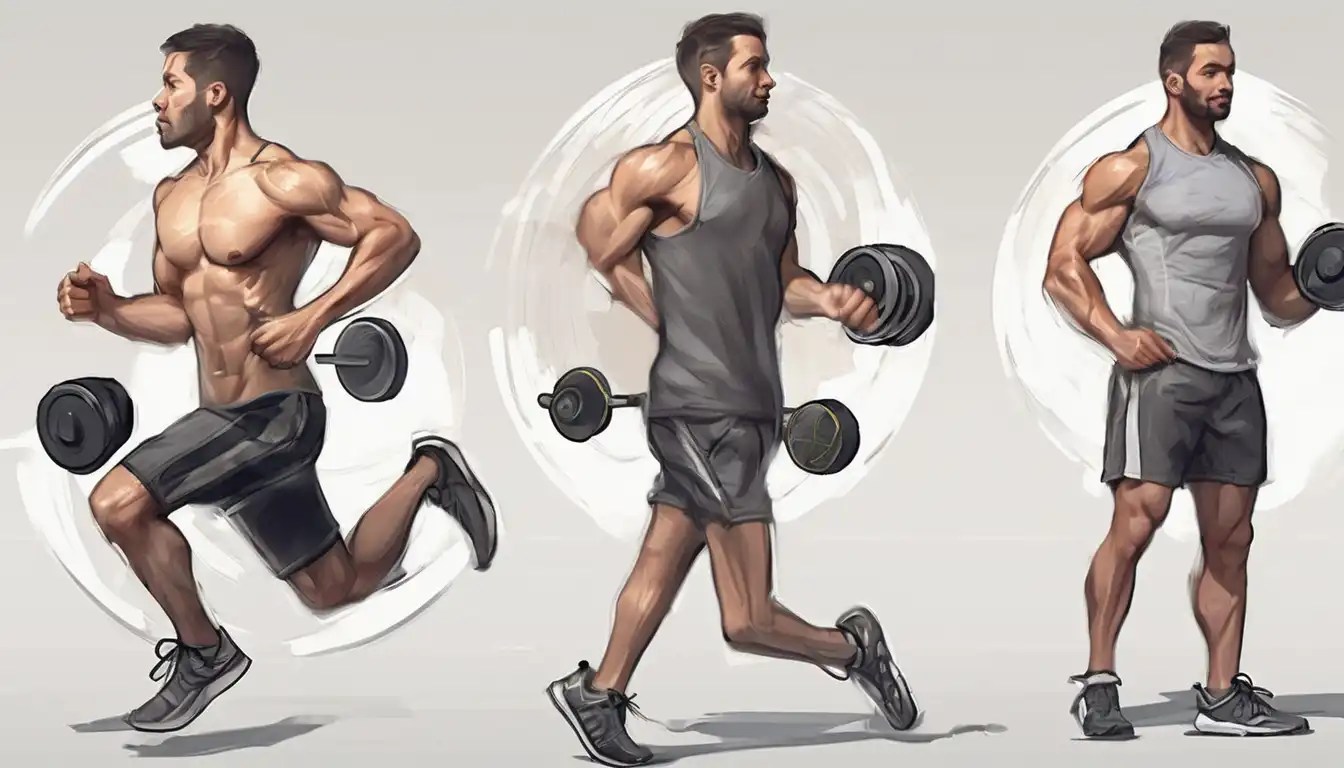Getting Started: Your Path to Fitness Success
Embarking on a fitness journey can feel overwhelming, but with the right approach, anyone can build a sustainable routine that delivers real results. Whether you're looking to lose weight, build strength, or simply improve your overall health, this comprehensive guide will walk you through every step of creating an effective fitness plan tailored to your needs.
Assess Your Current Fitness Level
Before diving into any workout program, it's crucial to understand your starting point. Take honest stock of your current fitness level by considering factors like cardiovascular endurance, strength, flexibility, and body composition. This baseline assessment will help you set realistic goals and track your progress effectively. Remember that everyone starts somewhere, and the most important thing is to begin where you are, not where you think you should be.
Setting SMART Fitness Goals
Effective goal-setting is the foundation of any successful fitness routine. Use the SMART framework to create goals that are Specific, Measurable, Achievable, Relevant, and Time-bound. Instead of vague aspirations like "get fit," aim for concrete objectives such as "lose 10 pounds in 3 months" or "run a 5K in under 30 minutes within 12 weeks." These clear targets will keep you motivated and provide tangible milestones to celebrate along your journey.
Choosing the Right Exercise Types
A balanced fitness routine incorporates four key components: cardiovascular exercise, strength training, flexibility work, and balance exercises. Cardiovascular activities like walking, running, or cycling improve heart health and burn calories. Strength training builds muscle mass and boosts metabolism. Flexibility exercises enhance mobility and reduce injury risk, while balance work becomes increasingly important as we age.
Cardiovascular Exercise Basics
For beginners, start with low-impact cardio options like brisk walking, swimming, or using an elliptical machine. Aim for 150 minutes of moderate-intensity cardio per week, broken into manageable sessions. As your fitness improves, you can gradually increase intensity and duration. Remember that consistency matters more than intensity when you're starting out.
Strength Training Fundamentals
Strength training doesn't require expensive equipment or complicated routines. Bodyweight exercises like squats, push-ups, and planks provide excellent starting points. Focus on proper form rather than heavy weights, and aim for two to three strength sessions per week, allowing at least 48 hours between workouts for the same muscle groups.
Creating Your Weekly Schedule
Structure your week to include variety while allowing adequate recovery time. A sample beginner schedule might include cardio on Monday, Wednesday, and Friday; strength training on Tuesday and Thursday; with active recovery like stretching or light walking on weekends. The key is finding a rhythm that fits your lifestyle and keeps you engaged without causing burnout.
Workout Duration and Frequency
As a beginner, start with shorter sessions (20-30 minutes) and gradually build up as your endurance improves. Three to four workouts per week provides a solid foundation while allowing sufficient recovery. Listen to your body—if you feel excessively sore or fatigued, take an extra rest day. Quality always trumps quantity when establishing new habits.
Essential Equipment and Gear
You don't need expensive equipment to start your fitness journey. Comfortable athletic shoes, moisture-wicking clothing, and a water bottle are the only essentials. As you progress, consider investing in resistance bands, dumbbells, or a yoga mat. Many effective workouts require no equipment at all, making fitness accessible regardless of budget.
Home vs. Gym Workouts
Both home and gym workouts offer distinct advantages. Home workouts provide convenience and privacy, while gyms offer equipment variety and professional guidance. Consider your personality, schedule, and budget when choosing your primary workout environment. Many successful fitness enthusiasts combine both approaches for optimal results.
Nutrition and Hydration Fundamentals
Exercise and nutrition work together to create lasting health changes. Focus on balanced meals containing lean proteins, complex carbohydrates, healthy fats, and plenty of vegetables. Stay hydrated by drinking water throughout the day, especially before, during, and after workouts. Proper fueling supports your energy levels and recovery process.
Pre- and Post-Workout Nutrition
Eating a light snack containing carbohydrates and protein about 60-90 minutes before exercise can boost your performance. After workouts, consume protein to support muscle repair within two hours. These nutritional strategies enhance your results and help prevent fatigue and muscle soreness.
Tracking Progress and Staying Motivated
Regular progress tracking helps maintain motivation and identifies areas for improvement. Take measurements, photos, or keep a workout journal to document your journey. Celebrate non-scale victories like improved energy, better sleep, or clothing fitting differently. These small wins provide powerful motivation to continue your fitness habit.
Overcoming Common Challenges
Every fitness journey encounters obstacles like time constraints, motivation dips, or plateaus. Plan for these challenges by having backup workouts for busy days, finding an accountability partner, or varying your routine to combat boredom. Remember that consistency over perfection leads to long-term success.
Safety Considerations and Injury Prevention
Proper warm-ups and cool-downs are non-negotiable for injury prevention. Spend 5-10 minutes warming up with dynamic stretches before workouts, and cool down with static stretching afterward. Learn proper exercise form to avoid strain, and never push through sharp pain. Gradual progression is safer and more sustainable than rapid intensity increases.
When to Seek Professional Guidance
Consider consulting with fitness professionals if you have specific health concerns, are returning to exercise after injury, or want personalized programming. Certified personal trainers can provide form correction and tailored advice that accelerates your progress while minimizing injury risk.
Building Long-Term Habits
The ultimate goal is transforming exercise from a chore into an enjoyable lifestyle habit. Find activities you genuinely enjoy, be patient with your progress, and focus on how exercise makes you feel rather than just how it makes you look. Sustainable fitness comes from creating habits that enhance your life rather than dominate it.
Remember that every expert was once a beginner. Your fitness journey is unique to you, and the most important step is simply starting. With consistency, patience, and the right approach, you'll build not just a fitness routine, but a healthier, more vibrant life.
